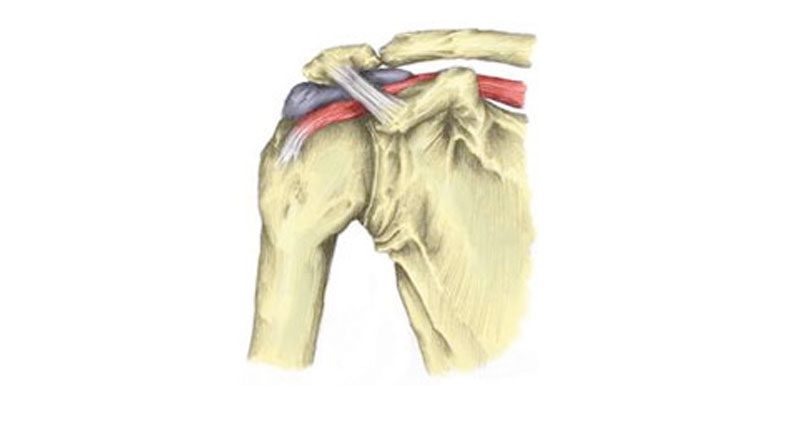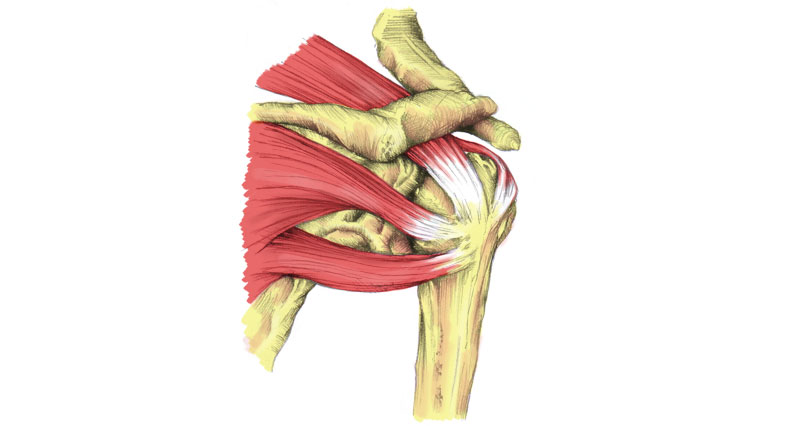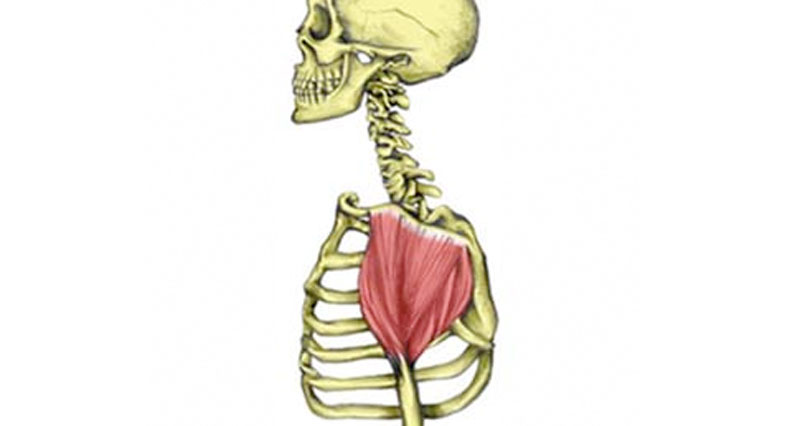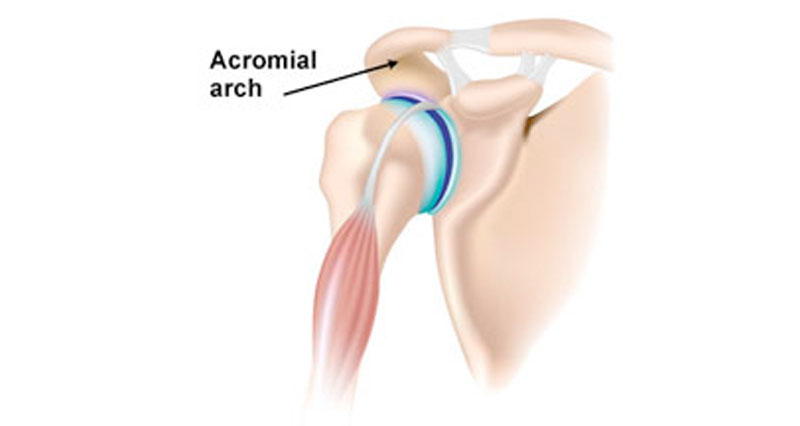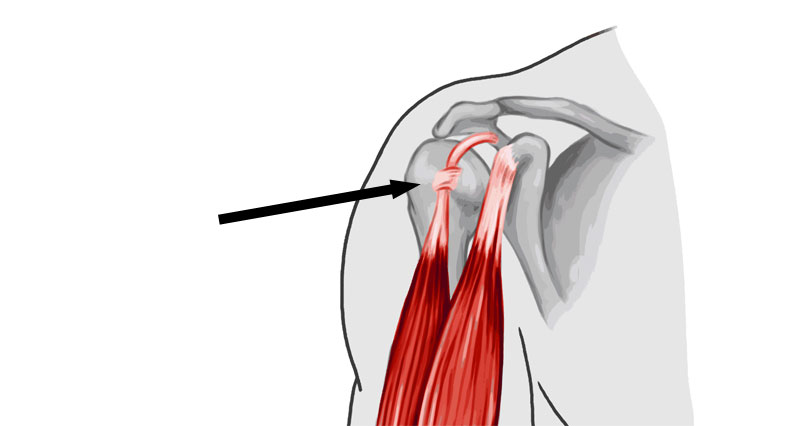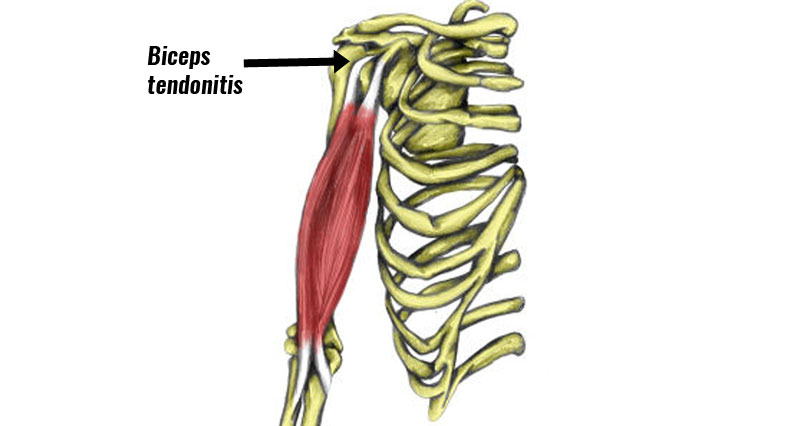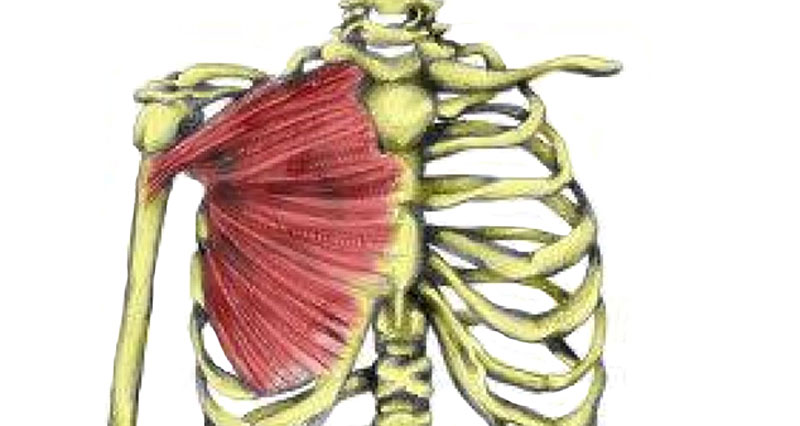Subacromial bursitis has similar symptoms to Supraspinatus tendinitis. In particular, shoulder pain over a 60-degree arc as you lift your arm out sideways.
Symptoms
Symptoms of subacromial bursitis can be similar to those of supraspinatus inflammation and consist of:
- Pain and weakness in the arm
- A painful 60-degree arc when abducting your arm
- Pressing in over the inside, and front of the shoulder is painful and tender
- Little or no pain when abducting your arm against resistance (compared with supraspinatus tendonitis)
What is a subacromial bursitis?
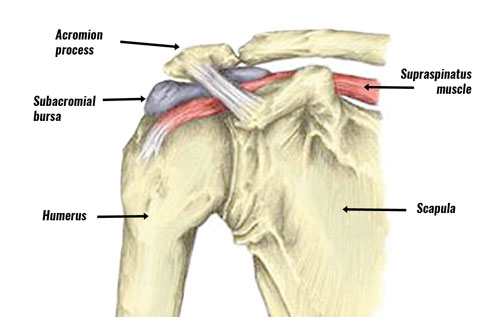
Subacromial bursitis is inflammation of the subacromial bursa which sits between the supraspinatus tendon and the bone in the shoulder. A bursa is a small sack of fluid. Its function is to help lubricate the movement of the shoulder joint.
The Supraspinatus muscle runs along the top of the shoulder blade (scapula) and inserts via the tendon at the top of the arm or humerus (upper arm) bone. The muscle lifts the arm up sideways and is important in throwing sports. As one of the rotator cuff muscles, it holds the arm in the shoulder when you release what you are throwing.
What causes subacromial bursitis?
Overuse is usually the underlying cause, especially in overhead sports, for example, badminton and tennis. The bursa becomes trapped causing pain and inflammation.
Injury to the supraspinatus tendon also causes inflammation. As a result, space in the joint reduces, therefore increasing the likelihood the subacromial bursa impinges.
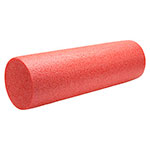
Foam Rollers
Large forces are involved when throwing, in particular when slowing the arm down after releasing the throwing implement. Few athletes people bother to train the rotator cuff muscles, preferring to concentrate more on the muscles which accelerate the arm rather than decelerate it.
A heavy fall onto the shoulder can also result in injuring the supraspinatus muscle, which may also lead to bursitis.
Treatment
What can the athlete do?
- Rest – until there is no pain. Rest is important as every time movement causes pain in the shoulder the time taken to recover will be longer as the bursa becomes inflamed and swollen.
- Mobility – is possible however continue pain-free mobility exercises to keep the full range of movement in the shoulder. This is important to prevent loss of movement in the shoulder and eventually muscle weakness.
- Ice – apply cold therapy to reduce pain and inflammation. A cold pack or wrap can be applied every hour for 10 minutes reducing it to 4 times a day as required.
- Advice – see a sports injury specialist or doctor who can advise on subacromial bursitis treatment and rehabilitation.
What can a sports injury specialist or doctor do?
- Medication – a doctor may prescribe anti-inflammatory medication such as ibuprofen. This will help reduce pain and inflammation quite quickly although always consult a doctor before taking medication. Ibuprofen should not be taken if you have asthma.
- Rehabilitation – they may prescribe a full rehabilitation program to include mobility and strengthening exercises.
- Aspirate – if Subacromial bursitis does not respond to normal conservative treatment of rest and cold therapy then a doctor may aspirate the bursa which involves extracting the extra fluid through a needle injected into the bursa.
- Surgery – a surgeon may operate on persistent subacromial bursitis injuries.
Rehabilitation
The aims of Subacromial bursitis rehabilitation are to reduce pain and inflammation, improve or maintain mobility and strengthen the shoulder with the right exercises.
The following guidelines are for information purposes only. We recommend seeking professional advice before attempting any Subacromial bursitis rehabilitation.
Introduction
Before beginning a subacromial bursitis rehabilitation program it is important to be aware that the athlete’s chance of the injury recurring is increased by any of the following:
- If they have an unstable shoulder joint where there is a lot of movement and weakness in the joint for example from a previous injury or a shoulder dislocation. If you are not sure, see a sports injury professional. Failure to recognize this may mean the injury is likely to recur.
- Poor technique or bad training habits. Overuse or training too hard is just as likely to cause injury as poor technique. If not sure, find a good coach.
- Weakness in the rotator cuff muscles. Strengthening exercises should not be neglected just because the pain has gone.
Stage 1: To reduce pain and inflammation.
The first priority of Subacromial bursitis rehabilitation is to reduce pain, inflammation and bursa swelling.
- Apply cold therapy or ice to the shoulder. This will help reduce pain and inflammation. Apply ice for up to 15 minutes every hour, gradually reducing the frequency of applications as the shoulder improves.
- Rest the shoulder. Do not do anything that causes pain. Every time the athlete causes pain, they may be making the injury worse. If necessary, use a sling to restrict movement then do so but only for a few days.
- NSAID or anti-inflammatory medication (e.g. ibuprofen) may help in the early stages. Always check with your doctor before taking medication if you are not sure.
Stage 2 Subacromial bursitis rehabilitation
The aim of stage 2 is to re-establish the shoulder range of motion and strength. This is usually 5 to 7 days after injury.
- Range of motion is done through shoulder mobility exercises, gradually increasing the range of motion the joint will go through pain-free and specific stretching exercises to stretch all muscles around the shoulder joint.
- Sports massage techniques can help to improve greatly the condition of the rotator cuff muscles, so allowing more joint flexibility and better response to strengthening exercises.
- Strengthening exercises concentrate more specifically on the external rotator muscles (the ones that rotate the arm out) and the scapular stabilizers (muscles that support the shoulder blade). It is also important to strengthen the whole joint.
- Strengthening exercises must be done pain-free and in conjunction with stretching exercises.
Stage 3: Subacromial bursitis rehabilitation
To return the athlete to competition or specific training
- These exercises need to be specifically tailored to the athlete’s sport. For example, throwers would start throwing a tennis ball against a wall. Five sets of 20 throws, gradually increasing the number of sets and number of repetitions assuming no pain during, after, or the next day.
How long will it take to heal?
Obviously, every injury is different, however, the athlete is usually able to resume sports-specific training after between 1 and 3 weeks. If the injury is neglected it could become chronic and be very difficult to treat resulting in a cycle of rotator cuff injury and impingement of the shoulder joint.
References & further reading
- Wilk KE, Obma P, Simpson CD, et al. Shoulder injuries in the overhead athlete. J Orthop Sports Phys Ther 2009;39(2):38–54
- Balke M, Schmidt C, Dedy N, et al. Correlation of acromial morphology with impingement syndrome and rotator cuff tears. Acta Orthop 2013;84(2):178–83
